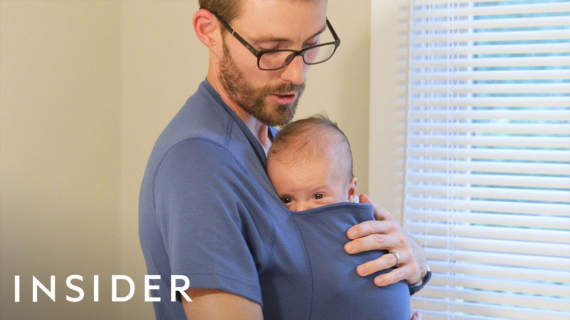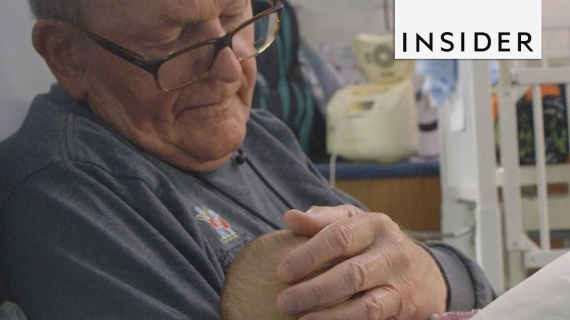25 Stunning Labor Photos: Which Position Should You Birth In?
Labor and delivery is a unique and individual experience for every expectant mother. Did you know there are many options for laboring and pushing? Certain positions can help speed up the process and make it more comfortable.
You'd be amazed at how important positioning is when it comes to labor and birth. Babies often move through the body in a slightly awkward way, so finding an optimal position for yourself and your baby can be really important.
The poses in the photographs is something a lot of women feel the need to do instinctively. Take note that doing things instinctively is often what is best for your body, so do what it is telling you to do!
To explore the various positions you might labor and birth in, check out the photos below.
This is a great position for any Mom, especially first-time.
It's interesting to learn the history behind the supine position (laying on your back) for pushing. Until doctors began using forceps in the 17th century, women were rarely shown giving birth while lying on their back. Waiting for that reflective urge to push and using gravity-neutral positions can be incredibly beneficial during the second stage. We find that the majority of clients, when left totally unprompted, naturally get into a hands and knees, squatting or kneeling position when this stage hits.
Birthing beds are able to adjust in specific ways to allow a safe upright pushing position whilst having an epidural as well. Support people and birthing poles as seen in this picture will also help achieve safe upright positions.
Love that this #twinmom found her spot on the floor and birthed her babies where it felt right for her. There's a big misconception that birthing in a hospital means you have to birth on your back and in the bed. That isn't true. Sometimes it requires being a little more firm with the staff, but you have the right to freely move around!
Did you know most hospitals have squat bars? All you have to do is ask for one! It provides the perfect support for squatting and kneeling on the bed.
Using the toilet during labour has huge benefits! Just sitting on the loo creates muscle memory and helps everything (down there) to relax. The squatting posture aids the pelvis to open up as well as gravity being on your side. It's a fab one to use if labour seems to stall a bit, as it can move the position of baby's head slightly to aid delivery. Let's not forget the fact that by emptying your bladder you are making more room for baby's head to descend and encourage the cervix to dilate.
If your birthing environment has a mechanical bed - use it! You can sit on a birthing ball and lean on the bed. You can be on the bed, on your knees and lean over the head of the bed. If it's high, it can support your arms. If it's low, it can support a squat.
The position of sitting on a toilet is a fantastic upright, forwards and open position (UFO). Gravity and the space created in the pelvis work with you to encourage your baby to move downwards. Sitting backwards on the toilet and leaning on plenty of pillows will help you to rest in this position for a while. In a birth centre or labour ward the shower may reach you whilst you sit on the toilet which may provide relief on your back and offer comfort. If this isn’t possible a warm compress or sacral massage may feel good.
Gravity and a physiologic labor+birth. Your own innate power and ability to do what’s needed…and laboring+birthing in an upright position aids that. Its working with gravity and not against it which helps bring baby down. Nature is power!
There is no one size fits all! There are absolutely great positions that will allow your hips and pelvis to open such as this upright squat! But ultimately it is up to you, in your moment, with your baby.
Physiologically, the one consideration when 'selecting' your birthing position is the bones of your pelvis. Specifically your coccyx, or tailbone. When we lay on our back, the surface we are laying on splints our coccyx and prevents it from moving outwards - decreasing the potential space in the pelvic outlet. The position of the coccyx, when on your back, also requires you to essentially push your baby up hill - against the coccyx and against gravity.
A strong scarf or a rope can provide amazing support for you to lean on in labour. The great thing about a rope/scarf is that it isn't static, it really encourages you to rock and move your body to find what feels good. Tuning into what feels good in labour is always going to be the right thing for you and your baby.
Here you can see a woman in labor doing a forward leaning inversion. Beds are there mostly for your (and your care providers) convenience. You can move the bed out of the way, lean on it, assume various positions on the bed or just totally disregard it!
This is a perfect example of an Upright, Forward & Open (UFO). Being in a UFO position means your pelvis will be 30% larger than when laying on your back. It also helps to speed up labour, reduce the risk of tears and provides baby with more oxygenated blood.
This helps the pelvis expand and babies to negotiate their way down through it - with a bit of gravity on their side. If you are free to move instinctively, you can trust in your body knowing what to do!
The good ol’ lavatory may not be the first spot you think of when it comes to comfortably resting during labour, but I like many expectant mamas naturally gravitated towards the loo when working through labour.
This mama has this squat down! Can help to relax the cervix for opening and increase the contractions. Keeping off the sacrum allows it to move and opens up the pelvic outlet increasing it by up to 30%. Gravity lends a helping hand assisting baby to move lower which helps apply pressure to the cervix aiding in dilation, effacement and baby moving further into the birth canal.
This position is perfect for helping to open and bring the baby down the cervix. For some women this position is way too intense whilst others find it provides a lot of relief.
Abdominal Sifting is one of the many rebozo techniques originating from traditional midwives in Mexico. It can be used to help fetal positioning, relax ligaments in the uterus and muscles in the area.
Walcher’s position will allow contractions to engage a baby that is high, not really in the pelvis yet. The baby may be stuck at the brim or inlet of the pelvis.
Many hospitals have squat bars that attach to the bed so you can labor in a supported squat position. Squatting during labor is great for letting gravity help move baby down. It can help relieve pressure on the back as well.
The rebozo can help in many ways during pregnancy and labour. Helps to relax tight uterine muscles and ligaments. Helps to rotate baby into a more optimal position for birth. Helps a birthing woman relax during her labour. An additional comfort technique to use during labour.
Did you labor in the bathroom at all? Many women find the smaller and often darker space more protective and comforting then the larger birth room. Where were you most comfortable laboring?











